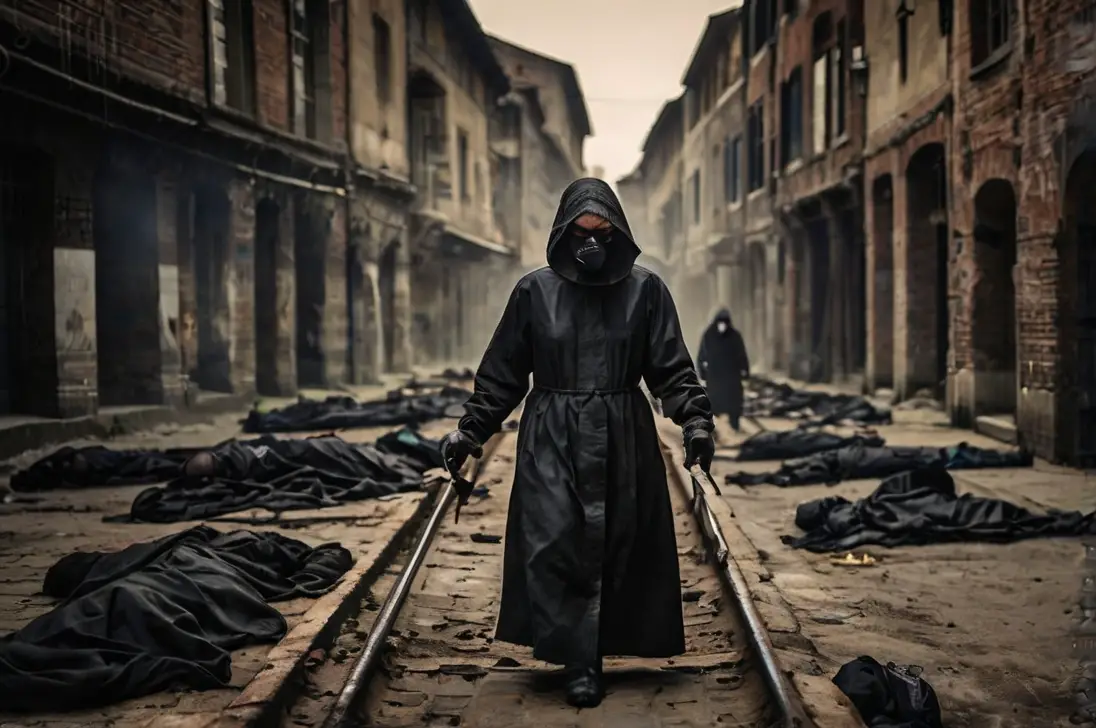
The Black Death, also known as the Bubonic Plague, spread across Europe from 1347 to 1351, causing immense devastation.
It’s considered one of the deadliest pandemics in history, claiming an estimated 25 million lives, which was about one-third of Europe’s population at the time.
This catastrophic event had profound effects on every aspect of society.
It reshaped European history in significant ways, impacting social structures, economies, public health, and culture.
This article explores the extensive and lasting consequences of the Black Death.
Social and Economic Effects
Social structure disruption
The Black Death, which spread across Europe from 1347 to 1351, had a profound impact on society.
It caused a huge number of deaths—about 25 million people—which shook up how society worked.
Many people died, disrupting the usual ways that communities were organized.
This led to more social problems and made it harder to keep things running smoothly.
People struggled with the loss of family, friends, and leaders, and things felt unsettled for a long time afterward.
- Read also: Toilets in a Medieval Castle: Unveiling the Privy Practices of a Bygone Era
- Read also: A Comprehensive Guide: Unraveling the Medieval Era Timeline
Economic fallout
The Black Death also had big economic consequences. It messed up trade and business all over Europe.
Many businesses and industries shut down because their owners or skilled workers died from the disease.
This left a massive gap in the workforce.
With fewer workers around, bosses had to compete for people to work for them.
They started paying more money and offering better conditions to get workers to stay.
This meant that workers had more power to ask for better pay and treatment.
Changes in work and jobs
Because so many people died, the way people worked changed a lot.
Employers had to adjust to the new reality.
They started offering better deals to get workers—like paying them more, giving them shorter hours, and making their lives better.
This change was good for workers who had struggled with low pay and bad conditions before.
But not everyone benefited equally.
Some people moved to places where things were better, while others had a tougher time finding work.

Health and Medical Effects
Spread of the disease
The Black Death spread rapidly across Europe from 1347 to 1351.
It was mainly carried by fleas that lived on rats.
The disease, caused by a bacterium called Yersinia pestis, thrived in crowded and dirty living conditions in cities.
Fleas would bite infected rats and then pass the disease to humans.
This lack of understanding about how diseases spread caused widespread panic and fear as people saw their communities devastated by death.
Medical response
During the Black Death, doctors struggled to treat or prevent the disease because they didn’t know how it spread or what caused it.
They relied on superstitions and treatments that didn’t work well.
Some common methods included draining patients’ blood and using herbs, but these did little to stop the disease or help those who were sick.
This lack of effective medical knowledge meant that many people suffered and died without proper treatment.
Long-term impact on health
The Black Death had lasting effects on public health and how medicine developed.
The huge number of deaths made it clear that better ways to prevent and treat diseases were urgently needed.
Over time, this pressure led to improvements in understanding how diseases spread and how to fight them.
It eventually sparked advances in medical knowledge and practices, although it took many years for these improvements to make a real difference.

Cultural and Artistic Effects
Changes in art and culture
The Black Death, which swept through Europe from 1347 to 1351, deeply influenced art and culture.
The widespread experience of death and constant reminders of mortality caused a shift in how artists expressed themselves.
Art became more serious and thoughtful, focusing more on the grim realities of the pandemic.
Artists started depicting themes of death and suffering more often, reflecting the somber mood of the time.
This marked a change from earlier art styles that focused more on religious or idealized themes.
Impact on education
The Black Death had a severe impact on education across Europe.
Many schools and universities closed because so many students, teachers, and scholars died.
This disrupted the passing down of knowledge for many years. It took a long time for educational institutions to recover fully.
Scholars and educators faced challenges in rebuilding schools and reviving learning after so much loss and upheaval caused by the pandemic.
Changes in family and community life
The pandemic also brought significant changes to how families and communities functioned.
With so many deaths, traditional family structures were often disrupted.
Many families lost multiple members, leading to changes in family roles and responsibilities.
Communities struggled with social bonds as they coped with widespread grief and loss.
People had to find new ways to support each other and rebuild their communities after such devastating losses.
These changes in family and community life persisted for a long time, shaping how people interacted and lived together.

- Read also: Unveiling the Mysteries: Exploring Medieval Era Facts and Beyond
- Read also: Unveiling the Tapestry: Medieval European Societies
Conclusion
The Black Death had a lasting impact on Europe, changing its social, economic, health, and cultural landscapes forever.
Although it caused immediate devastation, the pandemic also brought about important long-term changes that shaped European history.
FAQs
The Black Death spread rapidly due to fleas carried by rats, along with crowded and unsanitary living conditions in medieval cities, which facilitated the disease’s transmission.
Common ineffective treatments included bloodletting, the use of herbs, and various superstitious practices, as medical knowledge at the time was limited.
The labor shortage caused by the high mortality rate led to increased wages and better working conditions for surviving workers, as employers had to offer more attractive terms to attract labor.
Art and literature became more somber and reflective, often depicting themes of death and human suffering, as the pervasive sense of mortality influenced cultural expressions.



